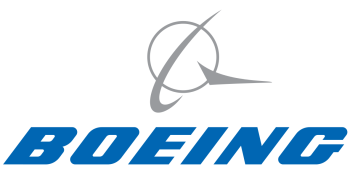Boeing is still not off the hook for its malfeasance behind the two 737-Max crashes that killed 346

It turns out that one week after a judge approved a plea deal in early November between Boeing and the Justice Department that would allows the company to avoid a criminal prosecution for its malfeasance and fraud that led to two 737-Max airplane crashes that killed a total of 346 people — thus dismissing the pending criminal charges — the families of the victims filed an appeal, asking a higher court to overturn that deal.
The families had argued before U.S. District Court Judge Reed O’Connor that the Department of Justice’s (DOJ) non-prosecution agreement violated the judicial review provisions, which was reached behind closed doors without the families’ statutory right to confer. The writ of mandamus argues that no substantive proceedings before Judge O’Connor were held before he made his decision in favor of Boeing.
…DOJ initially presented Judge O’Connor with a non-prosecution agreement (NPA) that he rejected. Instead of coming back with something more stringent, DOJ presented Boeing with the lesser punishment of an NPA in which Boeing would merely pay a $243.6 million penalty, give $444.5 million to be divided amongst the 346 families, and make additional investments in its safety and compliance. In exchange, the DOJ agreed to dismiss the criminal charge against Boeing. On November 6, Judge O’Connor approved this revised NPA and granted the government’s motion to dismiss.
The families now look forward to the Fifth Circuit Court of Appeals to reverse this decision through its writ of mandamus. In the writ, Paul Cassell, pro bono, attorneys for the families and professor of the S.J. Quinney College of Law at the University of Utah, argued on behalf of the families’ that the government’s NPA with Boeing would not provide sufficient oversight of Boeing and failed to account for the fact that Boeing’s criminal behavior was found to have caused the deaths of 346 crash victims. Boeing’s CEO and its lawyers had admitted to the fraud in a guilty plea issued four years ago.
In 2021 Boeing itself pleaded guilty to malfeasance and corruption charges, and was given three years to clean up its act or face criminal prosecution. When after three years Justice found Boeing had instead lied to it while doing little to fix things, it first proceeded with prosecution, only to suddenly back off and make this plea deal.
Thus, the families’ case is strong. Boeing is an admitted criminal and has also done nothing to change its behavior. Whether the families can get the plea deal overturned, however, remains unknown. The legal system no longer can be trusted when it comes to big government contractors like Boeing. The government acts routinely to protect them (as Justice is doing here), and thus there will be heavy political pressure on the courts to turn down this appeal.

It turns out that one week after a judge approved a plea deal in early November between Boeing and the Justice Department that would allows the company to avoid a criminal prosecution for its malfeasance and fraud that led to two 737-Max airplane crashes that killed a total of 346 people — thus dismissing the pending criminal charges — the families of the victims filed an appeal, asking a higher court to overturn that deal.
The families had argued before U.S. District Court Judge Reed O’Connor that the Department of Justice’s (DOJ) non-prosecution agreement violated the judicial review provisions, which was reached behind closed doors without the families’ statutory right to confer. The writ of mandamus argues that no substantive proceedings before Judge O’Connor were held before he made his decision in favor of Boeing.
…DOJ initially presented Judge O’Connor with a non-prosecution agreement (NPA) that he rejected. Instead of coming back with something more stringent, DOJ presented Boeing with the lesser punishment of an NPA in which Boeing would merely pay a $243.6 million penalty, give $444.5 million to be divided amongst the 346 families, and make additional investments in its safety and compliance. In exchange, the DOJ agreed to dismiss the criminal charge against Boeing. On November 6, Judge O’Connor approved this revised NPA and granted the government’s motion to dismiss.
The families now look forward to the Fifth Circuit Court of Appeals to reverse this decision through its writ of mandamus. In the writ, Paul Cassell, pro bono, attorneys for the families and professor of the S.J. Quinney College of Law at the University of Utah, argued on behalf of the families’ that the government’s NPA with Boeing would not provide sufficient oversight of Boeing and failed to account for the fact that Boeing’s criminal behavior was found to have caused the deaths of 346 crash victims. Boeing’s CEO and its lawyers had admitted to the fraud in a guilty plea issued four years ago.
In 2021 Boeing itself pleaded guilty to malfeasance and corruption charges, and was given three years to clean up its act or face criminal prosecution. When after three years Justice found Boeing had instead lied to it while doing little to fix things, it first proceeded with prosecution, only to suddenly back off and make this plea deal.
Thus, the families’ case is strong. Boeing is an admitted criminal and has also done nothing to change its behavior. Whether the families can get the plea deal overturned, however, remains unknown. The legal system no longer can be trusted when it comes to big government contractors like Boeing. The government acts routinely to protect them (as Justice is doing here), and thus there will be heavy political pressure on the courts to turn down this appeal.




